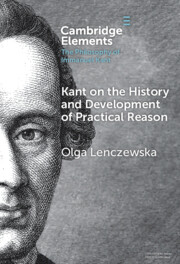Refine search
Actions for selected content:
152 results
Chapter 4 - Reason’s Supreme Principle, the Principle of Sufficient Reason, and the Faculty of Reason
-
-
- Book:
- The Aristotelian Kant
- Published online:
- 15 December 2025
- Print publication:
- 22 January 2026, pp 92-124
-
- Chapter
- Export citation
11 - Free Will
- from Part II - Theological Themes
-
-
- Book:
- The Origins of Scholasticism
- Published online:
- 18 November 2025
- Print publication:
- 08 January 2026, pp 309-332
-
- Chapter
- Export citation

The Aristotelian Kant
-
- Published online:
- 15 December 2025
- Print publication:
- 22 January 2026

Hume's A Treatise of Human Nature
- A Critical Guide
-
- Published online:
- 05 December 2025
- Print publication:
- 08 January 2026

Kant's Metaphysics of the Will
- Freedom, Reason, and the Moral Law
-
- Published online:
- 06 November 2025
- Print publication:
- 09 October 2025
Al-Ṣafadī’s veiled criticism of Ibn Taymiyya: esotericism, language, and reason in al-Ghayth al-Musajjam fī Sharḥ Lāmīyat al-ʿAjam
-
- Journal:
- Journal of the Royal Asiatic Society , First View
- Published online by Cambridge University Press:
- 22 October 2025, pp. 1-24
-
- Article
-
- You have access
- Open access
- HTML
- Export citation
6 - The Grounding Argument
-
- Book:
- Kant's Metaphysics of the Will
- Published online:
- 06 November 2025
- Print publication:
- 09 October 2025, pp 137-179
-
- Chapter
- Export citation
Chapter 7 - Vulnerability, Dialogue, and the Limits of Autonomy
- from Part IV - The Limits of Autonomy and Self-Rule
-
-
- Book:
- Platonic Autonomy
- Published online:
- 07 August 2025
- Print publication:
- 31 July 2025, pp 149-168
-
- Chapter
- Export citation
Chapter 3 - A Complex Model of Action: What Is Ruling?
- from Part II - Motivational Challenges to Self-Rule
-
-
- Book:
- Platonic Autonomy
- Published online:
- 07 August 2025
- Print publication:
- 31 July 2025, pp 58-80
-
- Chapter
- Export citation
Credo ut Intelligam: Anselm on Believing in the Church
-
- Journal:
- New Blackfriars ,
- Published online by Cambridge University Press:
- 28 July 2025, pp. 1-11
-
- Article
- Export citation
Kant on the Theoretical Use of the Ideas of Reason: A Transcendental Interpretation
-
- Journal:
- Canadian Journal of Philosophy / Volume 54 / Issue 3 / April 2024
- Published online by Cambridge University Press:
- 06 May 2025, pp. 230-250
-
- Article
-
- You have access
- Open access
- HTML
- Export citation
Reason and Language in Kant and Hamann
-
- Journal:
- Kantian Review / Volume 30 / Issue 1 / March 2025
- Published online by Cambridge University Press:
- 01 September 2025, pp. 117-136
- Print publication:
- March 2025
-
- Article
- Export citation
Chapter 3 - The Architectonic ars of Architecture: Explanation and Method in Vitruvius’ De architectura
- from Part II
-
- Book:
- The <I>artes</I> and the Emergence of a Scientific Culture in the Early Roman Empire
- Published online:
- 22 March 2025
- Print publication:
- 13 February 2025, pp 81-136
-
- Chapter
- Export citation
Chapter 5 - Making a Roman ars of Medicine
- from Part III
-
- Book:
- The <I>artes</I> and the Emergence of a Scientific Culture in the Early Roman Empire
- Published online:
- 22 March 2025
- Print publication:
- 13 February 2025, pp 203-258
-
- Chapter
- Export citation
9 - Liberty as Independence Reaffirmed
- from Part V - The Rival Views in Contestation
-
- Book:
- Liberty as Independence
- Published online:
- 23 January 2025
- Print publication:
- 06 February 2025, pp 229-254
-
- Chapter
- Export citation

Kant on the History and Development of Practical Reason
-
- Published online:
- 16 January 2025
- Print publication:
- 30 January 2025
-
- Element
- Export citation
Answering Liberal Protestantism: Eric Mascall and Karl Barth
-
- Journal:
- Journal of Anglican Studies / Volume 22 / Issue 2 / November 2024
- Published online by Cambridge University Press:
- 13 January 2025, pp. 499-511
-
- Article
- Export citation
Chapter 14 - Is There a Future for the Philosophy of Nature?
- from Part IV - On Contemporary Challenges for the Philosophy of Nature
-
-
- Book:
- Hegel's <i>Philosophy of Nature</i>
- Published online:
- 19 December 2024
- Print publication:
- 12 December 2024, pp 273-292
-
- Chapter
- Export citation
Chapter 9 - Logic and Physics in Hegel’s Philosophy of Nature
- from Part II - Cosmology, Mechanics, and Physics
-
-
- Book:
- Hegel's <i>Philosophy of Nature</i>
- Published online:
- 19 December 2024
- Print publication:
- 12 December 2024, pp 176-196
-
- Chapter
- Export citation
